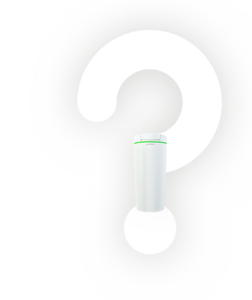Water softening systems
How does the ion exchange process work?
Why should I use a Grünbeck water softener?
Is it harmful to exchange calcium and magnesium?
What is the difference between a single, twin and triple softener?
How much salt does a water softener need?
Is the salt harmful to health? Can there be problems with blood pressure or circulation?
What is the water quality like after water softening?
Is it true that water softeners have a positive effect on our health?
Why does water treatment make sense?
Our water supply companies provide impeccable drinking water that can be enjoyed without any further treatment. Indeed, only 2 – 5 % of the water used in the home is used for drinking or cooking. The much larger part of water consumption is used for bathing and showering, flushing the toilet or washing.
The more calcareous the water is and the more it is heated, the more scale precipitates. This can settle in the pipes. Scale deposits are the result, which in turn leads to energy losses. The entire domestic water system, up to and including the sometimes expensive fittings and devices in the bathroom and kitchen, should be protected from costly damage.
Aggressive water causes corrosion in the pipe system, which can entail expensive consequential damage. Therefore, the water must be treated - depending on its natural composition and the planned use for scale prevention and corrosion protection. Grünbeck dosing can reduce the formation of scale in the pipes. In addition, a protective layer is formed on the inside of the pipe, which protects your installation preventively, e.g. against rust formation or pitting.
When do we refer to hard water?
The water hardness is measured in “German degrees of hardness” (°dH). Water above 14 °dH is considered hard. The higher the degree of hardness, the more calcareous the water. At 14 °dH, drinking water contains approx. 250 grams of calcium carbonate per cubic metre. At 14 °dH and an average water consumption of a family of four, this corresponds to about 30 kilograms of calcium carbonate in one year alone.
The water hardness can be determined with a water test kit for total hardness.
We recommend residual hardness of 3 - 6 °dH. The new German Drinking Water Ordinance does not stipulate a limit value, however.
How can I avoid scale in my drinking water?
- By using a water softener according to the ion exchange process. During this process, the hardness minerals calcium and magnesium are exchanged for sodium ions.
Home water softeners Commercial water softeners
The nature-identical ion exchange process has been proven for decades. EN and DIN standards, as well as the test mark “DVGW certificate”, ensure that this process and the systems used comply with the state of the art, and with the legal requirements. The core of a system for water softening by means of ion exchange is the exchanger material. It consists of synthetic resin.
Its particular characteristic is to exchange ions dissolved in the water. Initially, the exchanger material is saturated with sodium ions. When hard water is passed over the resin, the calcium and magnesium ions contained in the water are exchanged for the sodium ions present. After a certain amount of water has flown through, the surface of the exchanger material is occupied by calcium and magnesium ions instead of sodium ions.
No further exchange can take place as the exchanger material is exhausted. In order to regenerate it, the calcium and magnesium ions once again have to be removed from the resin surface. To do so, a brine solution is passed through the exchanger. Now, the calcium and magnesium ions exchange their places with the sodium ions again. The exchanger material is regenerated and ready for use again. The regeneration of the ion exchanger resin requires regeneration salt. Electrolytically generated chlorine automatically disinfects the ion exchanger material during each regeneration.
You can find out more about the different processes in the WATER KNOWLEDGE section.
Is it harmful to exchange calcium and magnesium?
No. Although magnesium and calcium are very important for our organism, drinking water only plays a minor role in ensuring an adequate supply of these substances. Food plays a much bigger role. You can, for example, meet your daily calcium requirement by merely consuming one pot of yoghurt. For comparison: 20 litres of water contain the same amount of calcium.
What is the difference between a single, twin and triple softener?
- The single system only features one exchanger tank. During the regeneration period, only hard water is available.
- In the case of the twin system, also referred to as alternating system, continuous soft water operation is ensured as it alternates between two exchanger tanks.
- The triple system features three exchanger tanks. Tanks 1 and 2 operate in parallel and once the capacity of tank 1 is exhausted, an automatic switch-over takes place, so that exchanger tanks 2 and 3 operate in parallel. Tank 1 is regenerated automatically. After the capacity of tank 2 has been exhausted, there is another switch-over which results in exchanger tanks 3 and 1 operating in parallel whilst tank 2 is being regenerated. This means that soft water is always available.
Should I shut off the central water supply and disconnect the water softener from the power supply when I am on vacation or away from home for a longer period of time?
For hygiene reasons, Grünbeck recommends not to shut off the water and not to put the water softener out of operation. Shutting down the system represents an interruption of operation that deviates from the intended use. From the point of view of the a.a.R.d.T., an interruption in the operation of water softeners should be avoided. (generally recognised rules of technology)
